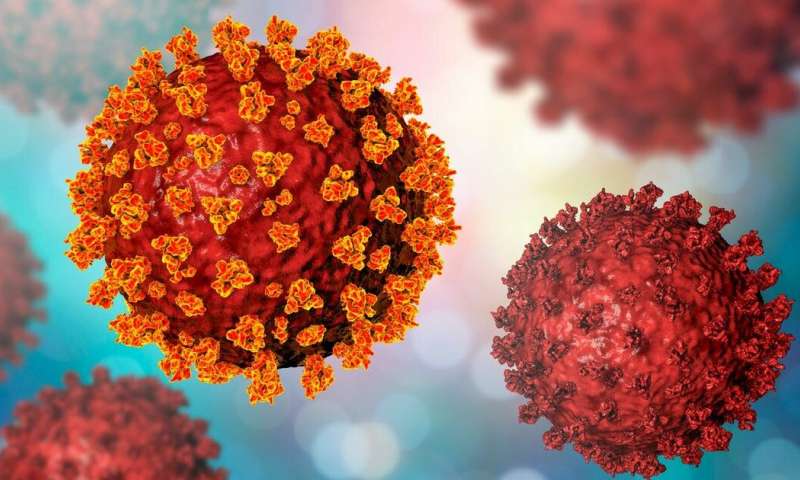A new study by researchers at Queen Mary University of London, University of Oxford, Institute for Advanced Studies, Vienna, and the Medical University of Graz, has found that lateral flow tests detect COVID-19 with similar accuracy to laboratory-based PCR tests, providing they are used at the onset of infection and soon after symptoms start.
Lateral flow tests are cheaper and produce a result in just 30 minutes—much faster than the time it takes to receive a PCR test result, which can take 1-3 days. The finding could be pivotal to national strategies looking to tackle the next phase of the pandemic, especially as timely and rapid testing becomes even more important once the current restrictions lift in England.
As part of the study, over 2,500 people with mild to moderate flu-like symptoms were assessed by GPs in the district of Liezen (population 79,652), Austria, between October 22 and November 30, 2020 and tested for viral antigen using lateral flow tests. Those who were suspected to have COVID-19 were also tested using a PCR test.
The lateral flow tests detected more than 95 percent of the cases found by PCR, and correctly identified 89 percent of cases as negative.
The study is the first to compare lateral flow and PCR testing on the same group of people on a large scale. It also included the variables of a real-world setting: five different brands of test kit, three laboratories, and professional swabbing offered at 20 GP practices.
Study author Dr. Werner Leber from Queen Mary University of London said: “Previous studies have suggested lateral flow tests may be less sensitive than PCR in detecting COVID-19, particularly among asymptomatic individuals and during the early or late stage of an infection when the viral load is lowest. But we have found that in patients who are newly symptomatic, the two testing methods have similar levels of accuracy.
“Countries are considering using lateral flow tests to manage future waves of the pandemic. Our findings support this move, but ensuring tests are properly administered should be integral to any strategy.”
Dr. Jasmina Panovska-Griffiths from the Big Data Institute and The Queen’s College at University of Oxford added: “In our study, both shorter duration of symptoms and higher viral load were significantly associated with positive lateral flow tests. This highlights the necessity of testing at early infection with lateral flow tests, and shows that in patients who are newly symptomatic, the two testing methods have similar levels of accuracy.
“Our study is the first study to demonstrate that point-of-care antigen testing using lateral flow tests combined with clinical assessment of symptomatic patients can rapidly and accurately detect SARS-CoV-2 infection in primary care.”
Dr. Thomas Czypionka from the Institute for Advanced Studies, Vienna, stated: “The study results provide the basis for future containment strategies in primary care, which can make an important contribution in control and prevention of a pandemic. In the context of future relaxations of lockdown rules—in addition to vaccinations—the early detection of people with infection through reliable tests will be necessary in order to control COVID-19.”
Prof Dr. Andrea Siebenhofer, from the Institute of General Practice and Evidence-based Health Services Research, Medical University Graz, said: “This trial was the first in Styria where general practitioners were actively involved in the research process. Research from practice for practice and with a result that can immediately contribute to an optimization of care during the COVID-19 pandemic.”
In summary, this study provides evidence that lateral flow tests can accurately detect SARS-CoV-2 infection as an alternative to PCR testing among symptomatic patients in a real-life primary care setting across a large geographical area.
Queen Mary, University of London


